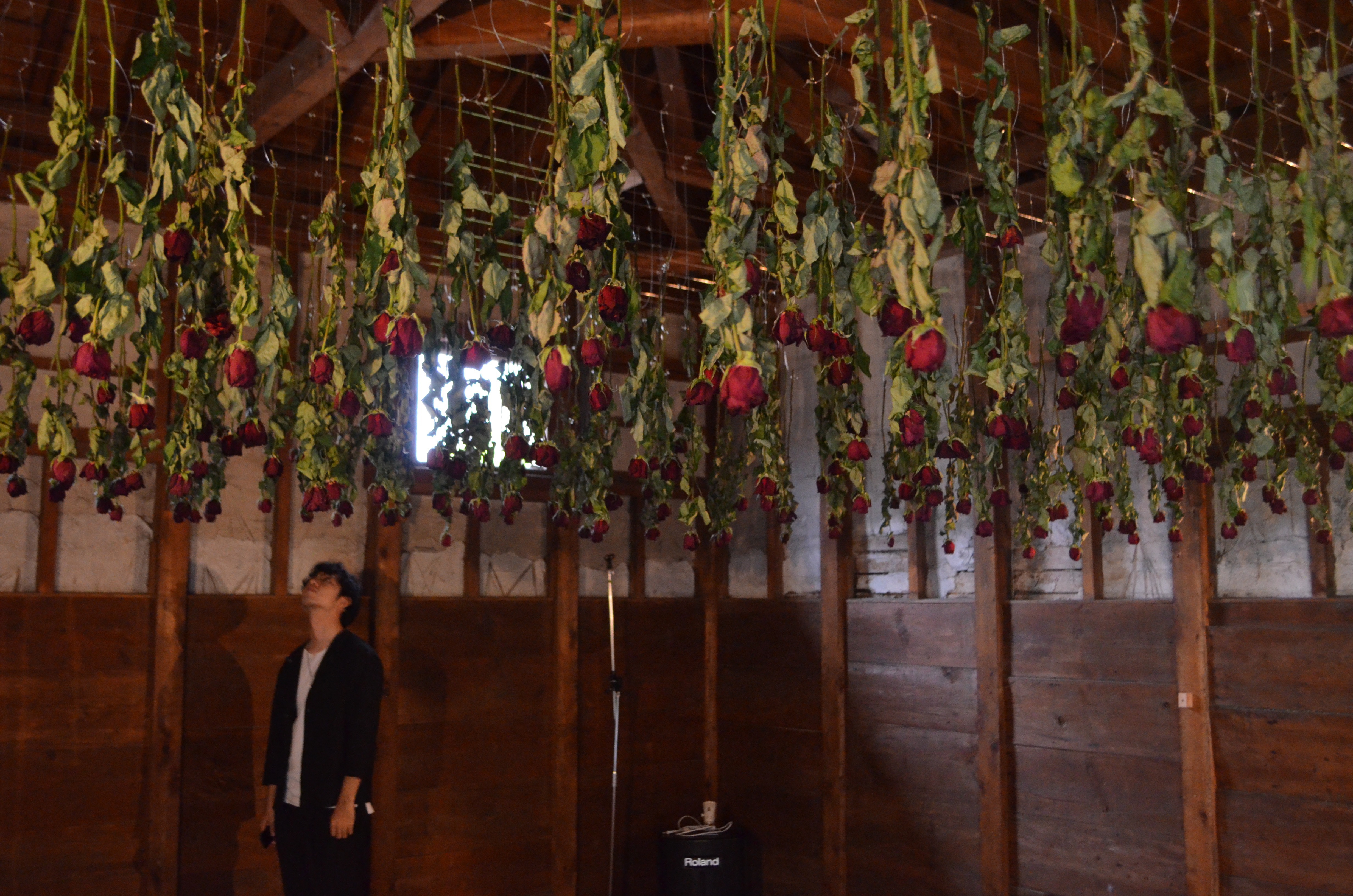がらんどうの庭 / Garando no Niwa
空から咲く300本の薔薇たち
薔薇の花々の凍った心臓
生が死へ向かう一本道の先に
普遍の美しさがある
感覚で味わう「がらんどうの庭」へ誘う

がらんどう = がらんどうとは建物の中に人がおらず、物もあまりない閑散とした様子を表し、
もともと寺院にある伽藍堂のことである。
寺院のお堂は広く、人もあまりいないことからきた言葉であり、
本来は寺院のように広い建物に人や物がないさまを指す。
その言葉からインスピレーションを得て、中身を感じ・考える作品を創作。
そして命あるものが失っていき、殻として残るという時間経過が見える作品ならいいのではないかと思い、
今回の作品「がらんどうの庭」になった。
-【不在を思考する】-
生あるものが死んでいくまでの時間経過を展示し、過去あった生を「知覚し思考する」作品である。
生あるものが死んでいくまでの時間経過を展示し、過去あった生を「知覚し思考する」作品である。
生から死、そして命を育むまでの時間の流れを、死というものも拒否せず、
そのまま受け止めてもらうということを意図している。
がらんどうは外皮はあれど中身がない状態のことをさす。
それは魂が抜けた骸であり、存在していた生が不在になった結果である。
そしてその残骸自体は不在を存在させる象徴となる。
「生が朽ちていく事、その時間、そして残骸になるまで」の美しさを生花を通して伝える。
また、私は日頃肉体を駆使して表現する舞踏家(ダンサー)である。
医療を含めたテクノロジー技術が進む現代社会で、
身体が発するエネルギー、そして「生の力」を
死へと向かうインスタレーション作品の中でパフォーマンスを通して感じてほしい。
テクノロジーを中心に秒速の速さで進む社会という環境、
死してもなお美しさを残しながら刻々と死へと向かう生花、
その中で生を発する人間の肉体を、すべての時間の流れとして受け取ってもらいたい。
Garandou = It means situation of leisureliness, only a few things, and no people in the building.
Garandou, this word originally comes from a buddhist temple in which Garanjin is enshrined is referred to as Garan-do.
Because a hall of buddhist temple is large and there are only a few people,
so Garandou indicates a situation that there are no people and things in a large building like a buddhist temple.
Garden of Garandou is installation exhibition by Norihito Ishii
who is participated in Butoh company named Sankaijuku and performed 70 cities in 25 countries as a dancer including his own activity.
This work shows time course which living thing go to die, and we can perceive the life which was exist in the past.
Grandou means condition of being lifeless shell.
It is dead body of which soul had gone out, and it is a result of that life which had been exist became absence.
Then this wreckage become a symbol to make an absence exist.
Though this work, you can see the beauty of life decaying, the beauty of remaining even dying, and the beauty of rebirth.
And he will do improvisation performance with some musicians in a apace of roses.


